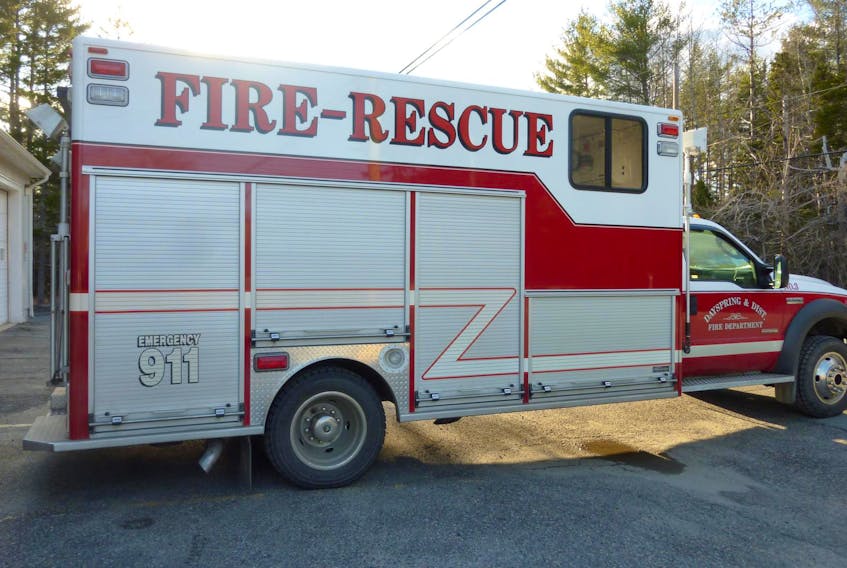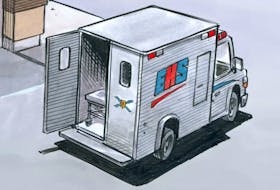I believe it’s time I weighed in on the paramedic situation in the province, from my perspective as a volunteer firefighter and advanced medical first responder (MFR).
Based on my personal interaction with paramedics on scene, I can attest they do an admirable and competent job responding to medical emergencies. Frankly, they are assets to our healthcare system.
The men and women are skilled, professional, are comforting and respectful when assessing and treating patients and discussing the immediate situation with often-stressed family members.
Problem is, many paramedic crews — and their ambulances and vital diagnostic equipment — are tied up at the province’s hospitals, waiting to transfer patients to the care of hospital staff.
The provincial offload time standard states that patients should be transferred from the care of paramedics to hospital staff within 20 minutes of arrival, 90 per cent of the time.
That’s what it states, but it’s certainly not the norm. Some offload times are three hours or longer. A South Shore paramedic remarked to me the other day that he can get a call instructing him and his partner to pick up a patient at a local hospital for transfer to a Halifax hospital.
So, this paramedic crew can spend its entire shift transporting a patient to Halifax, caring for the patient for hours before the offload to hospital staff can be made, then driving back to their home community. That eats up an entire working shift for two paramedics and their ambulance.
And if a rural ambulance is already in HRM, there’s a solid chance they will be held there to handle more emergencies in the city and environs.
No wonder there’s often a shortage of available paramedics and ambulances in rural regions. In fact, I’m told it would not be at all unusual to have only one ambulance available across a wide territory.
The offload delay and ambulance shortage are critical issues that need to be addressed immediately by the paramedics’ private-sector employer in collaboration with the province and its hospitals.
And while they are dealing with those issues, the authorities should grant a salary bump to Nova Scotia’s paramedics, who earn much less than counterparts elsewhere.
For example, an industry insider believes our paramedics would need a 50 per cent hike to match their Ontario counterparts.
Which brings me to something else of value that few people seem to discuss when the topic of Nova Scotia’s emergency medical response surfaces — the more than 2,000 MFRs volunteering at 234 fire departments throughout the province.
The provincial MFR program serves to enhance pre-hospital patient care provided by Emergency Health Services.
MFRs are volunteers — firefighters or others —trained to provide advanced medical first aid, including CPR and automated external defibrillation, to their community’s residents at home, in public places, at the scenes of motor vehicle collisions, or at any other emergency situation.
An MFR is often the first physical contact the patient has with an individual who can offer medical assistance. When we arrive before the paramedics, we assess the situation, ask the family to gather the patient’s medicines and health card, and we can start treatment, short of running an IV. The patient and family immediately feel a level of comfort, knowing someone has arrived to help them.
I’ve been an MFR with the Dayspring and District Fire Department for six years, a relatively short period. Many firefighters have been MFRs for much longer, and have helped hundreds of men, women and children, many of them living in close proximity to the MFRs’ own homes.
During the past fiscal year, April to March, MFRs from our small rural department responded to 57 emergency medical calls, at all hours of the day and night, and in all weather conditions.
Our rescue vehicle, like those at many other fire departments, has on board a fully equipped medical bag, pediatric medical bag, automated external defibrillator, oxygen tank and masks, a backboard and head chocks, and other equipment and tools to enable our MFRs to deal with any emergency.
Here’s what I’m thinking: Our hard-working paramedics should be afforded the recognition, support and compensation they so richly deserve. And we volunteer MFRs will be right there to assist them.
Peter Simpson is a veteran journalist and former CEO who now lives in Nova Scotia. His latest column, Here’s What I’m Thinking, which chronicles provocative random thoughts on a broad spectrum of topics, appears monthly.









